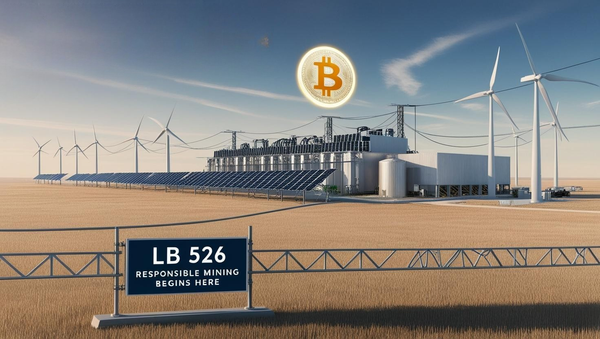How the Bitcoin Network is Maintained by the Community: Strengths and Weaknesses

The Bitcoin network, unlike traditional financial systems, operates without a central authority or governing body. Instead, its security, updates, and overall functionality are maintained by a decentralized and global community of developers, miners, node operators, and users. This unique structure contributes significantly to Bitcoin’s resilience and trustworthiness, but it also brings its own set of challenges. In this article, we’ll explore how the Bitcoin network remains intact through collective effort, its strengths, and the limitations of this approach.
Key Elements That Maintain the Bitcoin Network
1. Open-Source Development
Bitcoin Core, the reference implementation of the Bitcoin protocol, is open-source software hosted on platforms like GitHub. This allows developers worldwide to contribute to its codebase. They work to fix bugs, improve security, add new features, and keep the protocol efficient. Changes undergo extensive peer review and testing to ensure network stability.
- How It Works: Developers submit proposals and improvements in the form of Bitcoin Improvement Proposals (BIPs). These BIPs are reviewed and debated within the community before any updates are integrated into the Bitcoin Core codebase.
- Decentralization and Security: No single entity can control or enforce changes unilaterally. Every decision must be reviewed, tested, and agreed upon through a decentralized consensus process.
2. Node Operators
Nodes are the backbone of the Bitcoin network. A node is any computer that connects to the Bitcoin network and enforces the rules of the protocol by verifying transactions and blocks. There are two primary types of nodes:
- Full Nodes: Full nodes maintain a complete copy of the Bitcoin blockchain and validate transactions according to network rules. They reject invalid blocks and ensure the integrity of the chain.
- Light Nodes: Light nodes operate with a smaller amount of data, relying on full nodes to provide blockchain information.
Nodes collectively maintain the decentralized nature of the network by ensuring that no single entity can control it.
3. Miners and Proof of Work (PoW)
Miners play a crucial role in validating transactions and adding them to the blockchain. Through the Proof of Work (PoW) consensus mechanism, miners compete to solve complex mathematical puzzles, and the first one to find a valid solution adds a new block to the blockchain. In return, they receive a block reward in Bitcoin.
- Security through Mining: Mining helps protect the network from attacks, such as double-spending, by making it computationally expensive to alter the blockchain. The decentralized nature of mining also helps maintain network security.
4. Community Consensus
Significant changes to the Bitcoin protocol must be accepted by the network’s participants through community consensus. This process can involve heated debates, as seen with upgrades like SegWit (Segregated Witness) and the controversial block size debates. Consensus ensures that no changes are made unless a substantial portion of the network agrees.
Strengths of a Community-Maintained Bitcoin Network
1. Decentralization and Trustlessness
The decentralized nature of Bitcoin means that no single authority can control or censor the network. This structure promotes trustless interactions, as users do not need to rely on any central entity.
2. Resilience and Security
Bitcoin’s decentralized community-driven maintenance makes it resilient to attacks and censorship attempts. Since nodes and miners are distributed worldwide, disrupting the network is highly challenging.
3. Transparency and Accountability
Because Bitcoin’s code is open-source, anyone can review, audit, or suggest changes. This openness ensures that changes are scrutinized thoroughly, reducing the likelihood of malicious code being integrated.
4. Community Ownership
The collective participation of diverse individuals gives Bitcoin its power and sense of community ownership. This inclusivity is what drives innovation, security enhancements, and the continuous evolution of the network.
Weaknesses and Challenges of a Community-Driven Model
1. Slow and Complex Decision-Making
Achieving consensus on network upgrades or changes can be slow and challenging due to diverse opinions and interests within the community. This is a double-edged sword; while it prevents hasty or harmful changes, it can delay beneficial updates.
2. Risks of Centralization
Although Bitcoin is decentralized, mining pools have, at times, posed a centralization risk. Large mining pools can potentially gain a disproportionate amount of control over the mining process, potentially impacting network decisions.
3. Fragmentation Risks
Disagreements within the community can lead to network splits or forks. This has happened with previous contentious upgrades, resulting in new versions like Bitcoin Cash. While forks offer alternative pathways, they can create confusion and competition within the cryptocurrency ecosystem.
4. High Energy Consumption
The Proof of Work consensus mechanism, while highly secure, is energy-intensive. This has led to debates over Bitcoin’s environmental impact, with calls for exploring alternative consensus models.
5. Complexity of Governance
Governance within a decentralized network like Bitcoin can be complex. Coordination across diverse participants worldwide, with varying interests, cultures, and motivations, makes decision-making challenging. There is no central leadership, which can lead to prolonged debates and gridlock.
Conclusion
The Bitcoin network’s maintenance by a decentralized community is both its greatest strength and its primary challenge. This model ensures that no single entity controls the network, promoting trust, security, and transparency. At the same time, it can lead to slow decision-making and complex governance issues. As Bitcoin continues to evolve, its strength lies in its ability to foster collaboration and consensus, ensuring it remains robust and resilient for years to come.
This article presented by Loka Mining.
Loka is revolutionizing the Bitcoin mining ecosystem by directly connecting investors with Bitcoin miners through a decentralized mining pool and an upcoming permissionless forward hashrate marketplace protocol.
Loka enables investors to get Bitcoin at lower than market price without centralized & counter-party risks, and Bitcoin miners to access capital efficient financing and hedge their risk exposure by selling their future mining rewards.
Find out more about loka in https://lokamining.com — or access our mining pool aggregator on https://pool.lokamining.com





